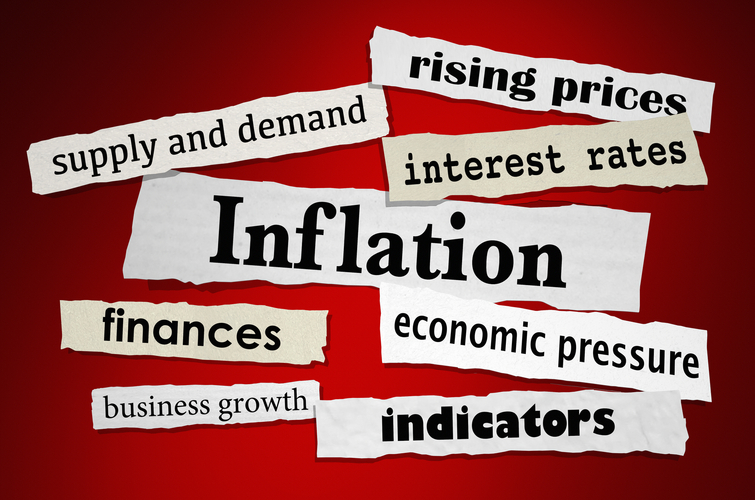October 27th, this Wednesday, is the date on everyone in the financial sector’s lips. The industry anticipation for this week’s hump day is because this is the next scheduled interest rate announcement and Monetary Policy Report released by the Bank of Canada. Many industry experts are hypothesizing that the central bank’s press release will include the news of another ‘quantitative tightening’, otherwise known as an increase to the Canadian interest rate.
In a nutshell, the Bank of Canada- our central bank-speaks to the practical delivery of its monetary policy by influencing short-term interest rates. This is achieved by adjusting the target for the overnight rate on eight fixed dates each year.
Overview of the overnight
If the term ‘overnight rate’ has left you scratching your head, Canadian Real Estate Wealth has your back!
Each business day, the financial institutions of Canada move money back and forth amongst each other on behalf of their customers. Whenever we send an electronic money transfer or use our debit card, money flows between the financial institutions. At the end of each day, the banks need to settle all these payments. Some institutions may have more outbound payments than inbound.
Although it’s not the only method for doing so, to satisfy the daily balance sheet, banks can borrow from each other for one day using the overnight market as a vehicle. The Bank of Canada sets a target for the interest rate for financial institutions to charge each other when making these overnight loans.
To ensure healthy and sustainable economic growth, inflation should hover around two percent. If the economy is stagnating, it could put inflation below that two percent threshold. If the economy is growing too much, too fast, it could lead to inflation. Dramatic jumps in inflation (AKA the cost of living) could mean that the cost of living is too high and consequently, no longer in the realm of affordability for many Canadian families. The Bank of Canada changes the overnight rate to curb or incentivize borrowing as a mechanism to drive inflation up to that two percent mark or to bring it down if it exceeds the two percent target.
Looking back to move forward
In order to figure out where you’re going, you need to look at where you’ve been. Complements of bankofcanada.ca, here’s a brief timeline of recent changes to the overnight rate:
· From April 21st, 2021 until January 26th, 2022 the overnight rate announcements stayed static at 0.25%
· On March 2nd, 2022 the overnight rate was increased by 0.25% to become 0.50%
· On April 13th, 2022 an announcement was made about the overnight rate increasing by 0.50% to become 1%.
· June 1st, 2022 saw another 0.50% rise to put the overnight rate at 1.50%.
· July 13th, 2022 saw the highest single rate increase since COVID-19 at 1% to bring the overnight rate to 2.5%.
· September 7th, 2022 also had another overnight rate increase in-store for Canadians. This increase was for 0.75%, bringing the overnight rate to 3.25% and this is where we are at the moment.
What can we expect from next Wednesday’s announcement?
According to a Reuters.com poll, economists are expecting that Bank of Canada Governor Tiff Macklem will announce that Canada’s central bank will raise its overnight rate by 50 basis points on October 26th, 2022.
The relationship between inflation and cap rate
There is a very close statistical relationship between real interest rates and cap rates or yields. A capitalization rate (also known as cap rate) is the rate of return on a real estate investment. While a cap rate doesn’t consider the impact of mortgage financing, a line drawn in the sand is whether the cap rate is above or below the interest rate. If the cap rate is higher than the interest rate, an investor will generally come out ahead. If the cap rate is less than the interest rate, investors will be relying on appreciation for their return, making it a riskier investment.
Historically speaking, cap rates will move with interest rates. As interest rates increase to keep inflation at bay, the cost of capital for borrowers goes up, and therefore the returns needed from their investments need to increase as well for investors to stay in the black.
How inflation impacts different investment market segments
If commercial historical trends are to be believed, we know rising inflation will hit the retail sector the most, as consumers cut back on non-essential spending. However, neighbourhood centres that are anchored around grocery stores trend more favourably when compared with those that aren’t anchored in such a way.
There’s good news for investors in apartment real estate. Cap rates are likely to continue to hold steady for the apartment market. This is because rising mortgage rates will tend to encourage renters who would have been able to afford a home to remain renters. Moreover, apartment assets are a good hedge against inflation as rents are adjusted annually.

In the office market, the vacancy rate in this segment remains elevated. However, as more employers are in their second or third phase of a graduated employee return-to-the-office plan, there’s an uptick in demand for office space which is expected to offset the slower new business formation. Furthermore, in particular geographic market segments, like Calgary, the office space landscape is changing in-step with the employer landscape. For further details check out the Canadian Real Estate Wealth piece Real Estate Investment in Calgary: Siren Song or Phoenix Story )
Slower economic growth when coupled with rising inflation is likely to reduce consumer spending and manufacturing which will have a trickle-down effect reducing the demand for industrial units. However, the philosophical shift from just-in-time inventory management to just-in-case inventory management as a strategy for minimizing supply chain disruptions could offset some of the decline in industrial space.
Canadian Real Estate Wealth turned to industry leader, best-selling author, and founder of Streetwise Mortgages, Dalia Barsoum to give us her take on how this rate change, if the Bank of Canada does indeed fulfill economists’ prediction, will impact first-time borrowers and established real-estate investors already in the market who are looking to scale up.
Ms. Barsoum notes that for those residential or investment clients, with a variable-rate mortgage, understand and do what you can to steer away from the trigger rate by either upping your monthly payment or making a prepayment. By way of refresher, the trigger is the point at which your regular payment is no longer enough to pay all the interest you’ve accrued since your last payment.
For first-time investors, Barsoum says that cash flow is the name of the game so, “…do the cash flow work. It’s a numbers game so go back through your math step-by-step and understand what the impact of a 1% increase will do to your cash flow and adjust accordingly…”
Addressing existing investors, the award-winning mortgage broker notes that the impact on investing depends on the product the client has. Barsoum recommends that her veteran-investor clients (and Canadian Real Estate Wealth’s investor readers!) assess a rate hike at the portfolio level. “If it’s positive or not, don’t panic. It’s a long-term strategy and there’s bound to be waves, but if structured correctly, 1 or 2 % won’t capsize your portfolio. Work with your trusted lender representative to look at cash flow solutions, even if it’s debt restructuring. The key for this client is to stabilize their cash flow.”
Barsoum also preaches caution and explores other options before going the route of debt restructuring. “I encourage my clients to seek ways to improve cash flow on the income front first. This may be looking at a property as a short-term rental to get that income up or maybe renting out another room or renting the property as several units, like by the room rather than one unit being the whole property, which will give my clients a bit more breathing room. Sometimes temporary or small changes can put investor clients back in a positive cash flow situation.”
A final thought…
A final thought as we look forward to Wednesday’s announcement, real estate investment is truly a long game. It’s preferable to other investments because it’s less volatile. And with Canada’s population growing each year through birth and immigration, people are always going to need a place to live. Prices may ebb and flow, but overall, they go up. Whether you’re the new kid on the block or are old hat, two things matter in real estate investing: positive cash flow and appreciation.
If the investor isn’t over-leveraged from carrying too much debt, they should maintain a long-term viewpoint and not get spooked by interest rate increases.
Heather McDowell is a mother and a REALTOR®. Heather has spent most of her real estate career selling residential real estate, and its leasing and has dealt with the additional complexities of the cottage, timeshare and rural properties, and condominiums. She has dabbled in new construction and is expanding her portfolio to include commercial sales and leasing. Heather is also a dedicated volunteer for both the local women’s shelter and a national hospice organization and is an emerging playwright.
Heather describes her focus as diversifying real estate content that not only addresses national matters but explores those issues unique to each province and territory.
You can contact Heather at heather@crewmedia.ca or find her on socials at:
Facebook – https://www.facebook.com/thestoreytellingcompany/
LinkedIn – www.linkedin.com/in/heather-mcdowell-98134118b
Instagram – https://www.instagram.com/hmcdowellrealty/








